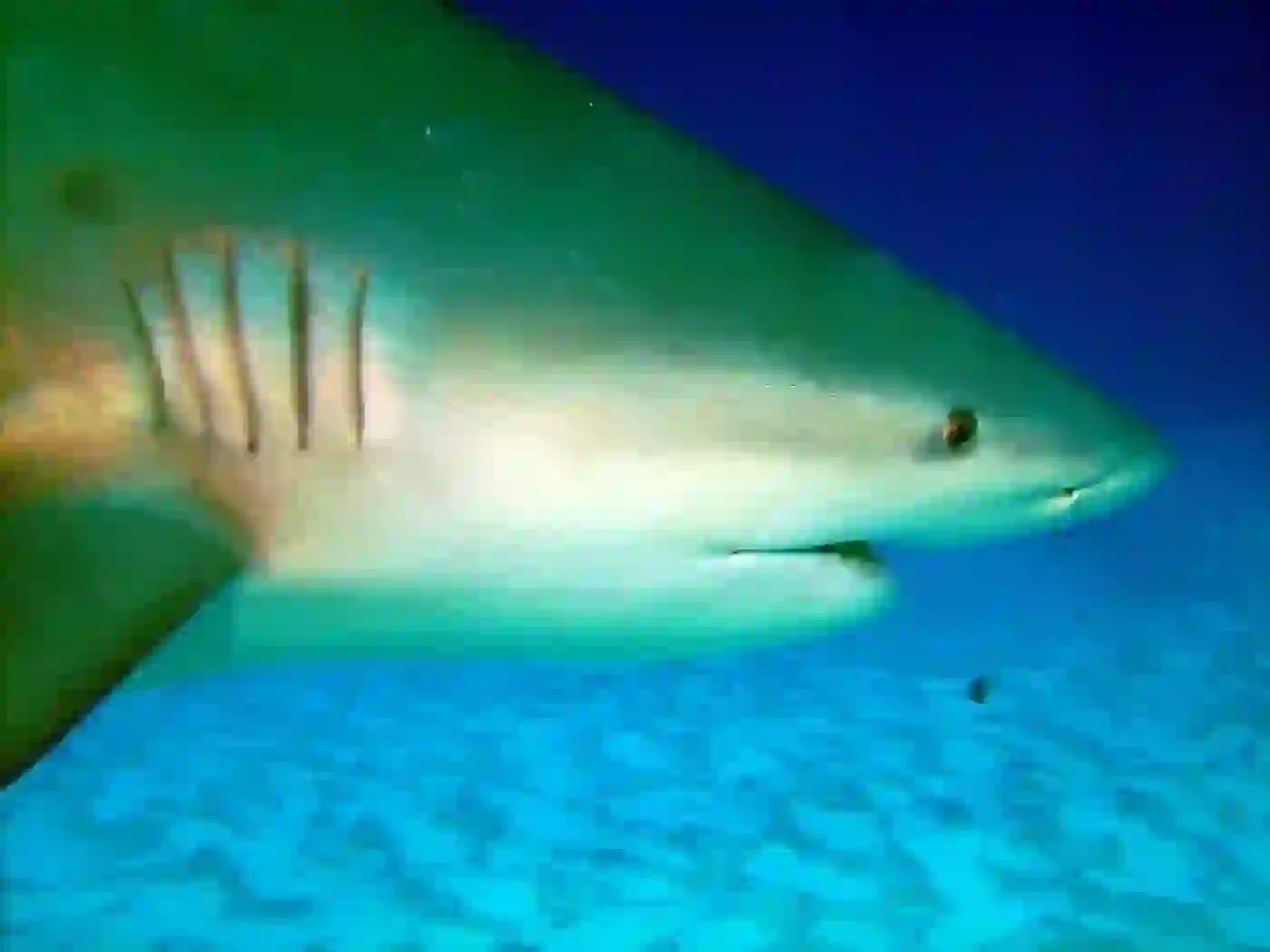
Bull Shark
Bull Shark
Bull Shark
Did you know that there are sharks that swim up rivers? The bull shark is an unusual shark that ventures into freshwater. Feared for their powerful jaws and aggressive nature, they also have a surprising side...? Let's dive into the secrets of the bull shark!
Bull Shark Basic Infomation

| Property | Value |
|---|---|
| Scientific Name | Carcharhinus leucas |
| Taxonomic Status | ACCEPTED |
| Rank | SPECIES |
| Vernacular Names | Bull Shark |
| Kingdom | Animalia |
| Phylum | Chordata |
| Class | Chondrichthyes |
| Order | Carcharhiniformes |
| Family | Carcharhinidae |
| Genus | Carcharhinus |
| Habitats | Tropical and subtropical coastal waters, rivers, and lakes worldwide |
| Descriptions | Bull sharks are characterized by their stout bodies with short, rounded snouts and powerful jaws, capable of inhabiting both freshwater and saltwater environments. |
| Conservation Status | Vulnerable |

Size
Adult females can reach up to 11.5 feet (3.5 meters) in length and weigh up to 700 pounds (316 kilograms). Males are slightly smaller, reaching around 8 feet (2.5 meters).

Lifespan
Their lifespan is estimated to be about 20 to 30 years.

Distribution
They are widely distributed in tropical and subtropical coastal waters, rivers, and lakes around the world. They are one of the few shark species that can live in both saltwater and freshwater.
This allows them to travel hundreds of kilometers upriver or even live permanently in lakes. They are sometimes sighted in Okinawa and the Amami Islands in Japan.
Bull Shark Q&A

What kind of shark is the bull shark?
Bull sharks are requiem sharks, known for their large, round eyes. They have a stocky build with a short snout and powerful jaws.
In English, they are called 'bull sharks' because of their tendency to charge at their prey like a bull. They are also sometimes called 'river sharks' because they can live in freshwater.

Why can bull sharks live in freshwater?
Most sharks can only live in saltwater. However, bull sharks can live in both saltwater and freshwater.
This is because they have a special ability called 'osmoregulation.' Osmoregulation is the ability to regulate the salt concentration in their bodies to match their surroundings. Bull sharks can adjust the function of their kidneys to maintain a lower salt concentration in their bodies than in seawater. This allows them to survive in freshwater environments.

What do bull sharks eat?
Bull sharks are voracious carnivores that eat a variety of animals, including fish, sharks, rays, turtles, dolphins, birds, crustaceans, and even garbage.
They are considered one of the most dangerous sharks in the world and have been known to attack humans. They are able to hunt in murky water and at night. This is because they have electroreceptors, called 'ampullae of Lorenzini,' that can detect weak electrical fields generated by other organisms. Bull sharks use these organs to locate prey.

[Quiz!] Where do bull sharks give birth?
Bull sharks are viviparous, meaning they give birth to live young after developing inside their mother's body. They give birth in shallow, protected areas like estuaries and mangrove forests.
This is because these areas provide protection from predators and are rich in small fish that the pups can feed on. Pups are about 3 feet (1 meter) long at birth and can swim immediately. They take about 10 years to reach adult size.

[Quiz!] Are bull sharks particularly aggressive among sharks?
Yes, bull sharks are known to be one of the most aggressive shark species. They are highly territorial and may attack anything that enters their territory.
They are also very aggressive when it comes to food and sometimes attack animals larger than themselves. Furthermore, they inhabit shallow waters close to human settlements, increasing the chance of encounters with humans, which can lead to attacks.

[Quiz!] Are bull sharks endangered?
Bull sharks are listed as Vulnerable on the IUCN (International Union for Conservation of Nature) Red List. Their populations are declining due to overfishing, habitat destruction, and climate change.
Protecting bull sharks requires various efforts, including fishing regulations, habitat conservation, and climate change mitigation.

Would you like to become a part of the 'Animalbook.jp'?
Turn your knowledge into Q&A and share it with the world. ※Publication will be activated after purchase. Let's share information together!
Bull Shark Type of List

Characteristics of Bull Sharks
- Can live in both saltwater and freshwater
- Have a short snout and powerful jaws
- Very aggressive carnivores
- Possess electroreceptors
- Viviparous
- Considered one of the most dangerous sharks in the world
- Vulnerable species
Information
Congratulations! You are the first commenter!

Create Your Favorite List!
Bull Shark
Save the animals you love! Build your own list to quickly revisit your favorites later.

Would you like to leave a comment?
※Please note: This is for the purchase of rights to post comments within the article.
Find Your Favorites!
Our shop offers a unique and attractive selection of goods themed around various animals.
Bull Shark References
Bull Shark Introduction of media used
Brunnschweiler J, Baensch H, CC BY 2.5, via Wikimedia Commons

SaCaDeLik, CC BY-SA 4.0, via Wikimedia Commons

Pterantula, CC BY-SA 3.0, via Wikimedia Commons

Help Enrich Our Animalbook.jp with Your Media!
We are constantly looking to expand and enrich our Animalbook.jp with amazing photos and videos of animals. If you have any media that you'd like to share, please contribute and help us showcase the beauty and diversity of the animal kingdom. Your submissions will be credited and featured in our encyclopedia, reaching a wide audience of animal lovers.


















